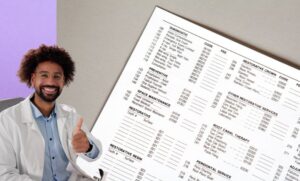In the frenetic pace of contemporary life, achieving a harmonious work-life balance between professional obligations and personal relaxation can seem like an elusive goal. The quest for increased efficiency in practice, coupled with the need to stave off burnout, becomes ever more critical as we yearn to savor the languid, sun-soaked days of summer.
The Importance of Efficiency and Well-being
Efficiency in practice not only enhances productivity but also contributes significantly to one’s overall well-being. By adopting strategic measures to optimize work processes, we can create a sustainable environment that nurtures both professional success and personal fulfillment.
Understanding Practice Efficiency
Definition and Key Components
Practice efficiency encompasses the ability to maximize productivity while minimizing wasted effort and resources. It involves a judicious allocation of time, energy, and tools to achieve desired outcomes with greater ease and precision. Key components include time management, prioritization, and the effective use of technology.
The Role of Time Management
Time management is the cornerstone of practice efficiency. By mastering the art of allocating time judiciously, one can streamline workflows, reduce unnecessary stress, and ensure that critical tasks receive the attention they deserve.
Strategies for Enhancing Practice Efficiency
Prioritizing Tasks: The Eisenhower Matrix
One effective strategy for prioritizing tasks is the Eisenhower Matrix, which categorizes tasks based on their urgency and importance. This method helps in identifying and focusing on high-priority activities while delegating or deferring less critical ones.
Setting Realistic Goals and Deadlines
Establishing clear, attainable goals and deadlines is essential for maintaining momentum and ensuring steady progress. Realistic goals provide direction and purpose, while deadlines create a sense of urgency that propels action.
Leveraging Technology for Automation
Technology can be a powerful ally in enhancing practice efficiency. By automating repetitive tasks and utilizing productivity tools, professionals can free up valuable time to focus on more strategic activities.
Also Read:
The Impact of Burnout
Recognizing the Signs and Symptoms
Burnout manifests in various ways, including chronic fatigue, irritability, and a diminished sense of accomplishment. Recognizing these signs early is crucial to implementing corrective measures before the condition exacerbates.
The Long-term Consequences of Burnout
Unchecked burnout can lead to serious long-term consequences, such as mental health issues, reduced job performance, and strained personal relationships. Addressing burnout promptly is vital for sustaining both professional and personal well-being.
Proactive Measures to Prevent Burnout
Establishing Boundaries Between Work and Personal Time
Setting clear boundaries between work and personal life is fundamental in preventing burnout. This can involve designated work hours, dedicated workspaces, and strict no-work zones during personal time.
Incorporating Regular Breaks and Downtime
Regular breaks are essential to maintain high levels of productivity and prevent mental exhaustion. Short, frequent breaks can rejuvenate the mind, while extended downtime allows for deeper relaxation and recovery.
Mindfulness and Stress Reduction Techniques
Mindfulness practices, such as meditation and deep breathing exercises, can significantly reduce stress levels. Incorporating these techniques into daily routines can enhance mental clarity and emotional resilience.
Creating a Supportive Work Environment
Fostering Open Communication
A supportive work environment encourages open communication, where team members feel comfortable expressing concerns and seeking assistance. This fosters a collaborative atmosphere that can enhance overall efficiency.
Encouraging Team Collaboration
Promoting teamwork and collaboration can lead to innovative solutions and shared workloads, reducing the burden on individual team members and preventing burnout.
Optimizing Work-life Balance
The Role of Flexible Scheduling
Flexible scheduling allows professionals to tailor their work hours to fit personal needs, thereby enhancing work-life balance. This flexibility can lead to increased job satisfaction and reduced stress.
Planning for Quality Time During Summer Days
Strategic planning for summer activities ensures that professionals can enjoy quality time without compromising their work responsibilities. This involves scheduling leisure activities in advance and coordinating workloads accordingly.
Leveraging Summer to Recharge
The Benefits of Outdoor Activities
Engaging in outdoor activities during summer can provide a much-needed respite from the confines of the office. Activities like hiking, swimming, and picnicking can rejuvenate the spirit and improve overall well-being.
Integrating Mini-vacations into the Schedule
Short, frequent vacations can be more beneficial than long, infrequent ones. Mini-vacations allow for regular intervals of relaxation and adventure, contributing to sustained energy and enthusiasm.
Case Studies: Success Stories
Real-life Examples of Efficient Practices
Examining case studies of individuals and organizations that have successfully implemented efficiency strategies can provide valuable insights and inspiration. These examples highlight practical approaches and the tangible benefits of increased efficiency.
Lessons Learned from High-Performing Individuals
High-performing individuals often employ unique strategies to maintain efficiency and prevent burnout. Learning from their experiences can offer actionable tips and motivate others to adopt similar practices.
Conclusion
Embracing a Holistic Approach
Achieving a balance between efficiency, burnout prevention, and enjoying summer days requires a holistic approach. By integrating strategic practices and prioritizing well-being, professionals can thrive both in their careers and personal lives.
The Road Ahead: Sustaining Efficiency and Enjoyment
Sustaining efficiency and enjoyment is an ongoing journey. By continually refining practices and adapting to new challenges, one can maintain a harmonious work-life balance that fosters long-term success and fulfillment.









